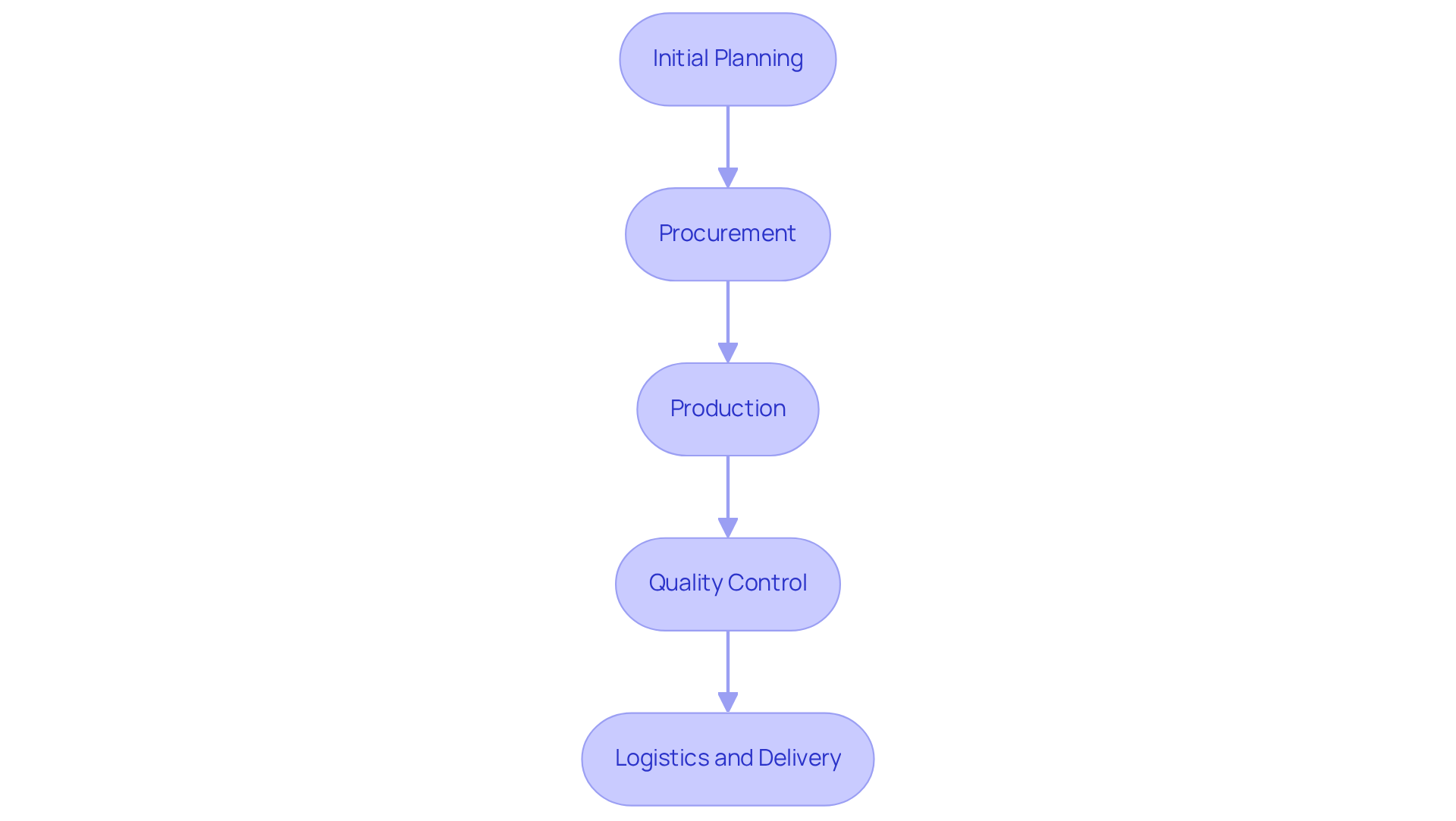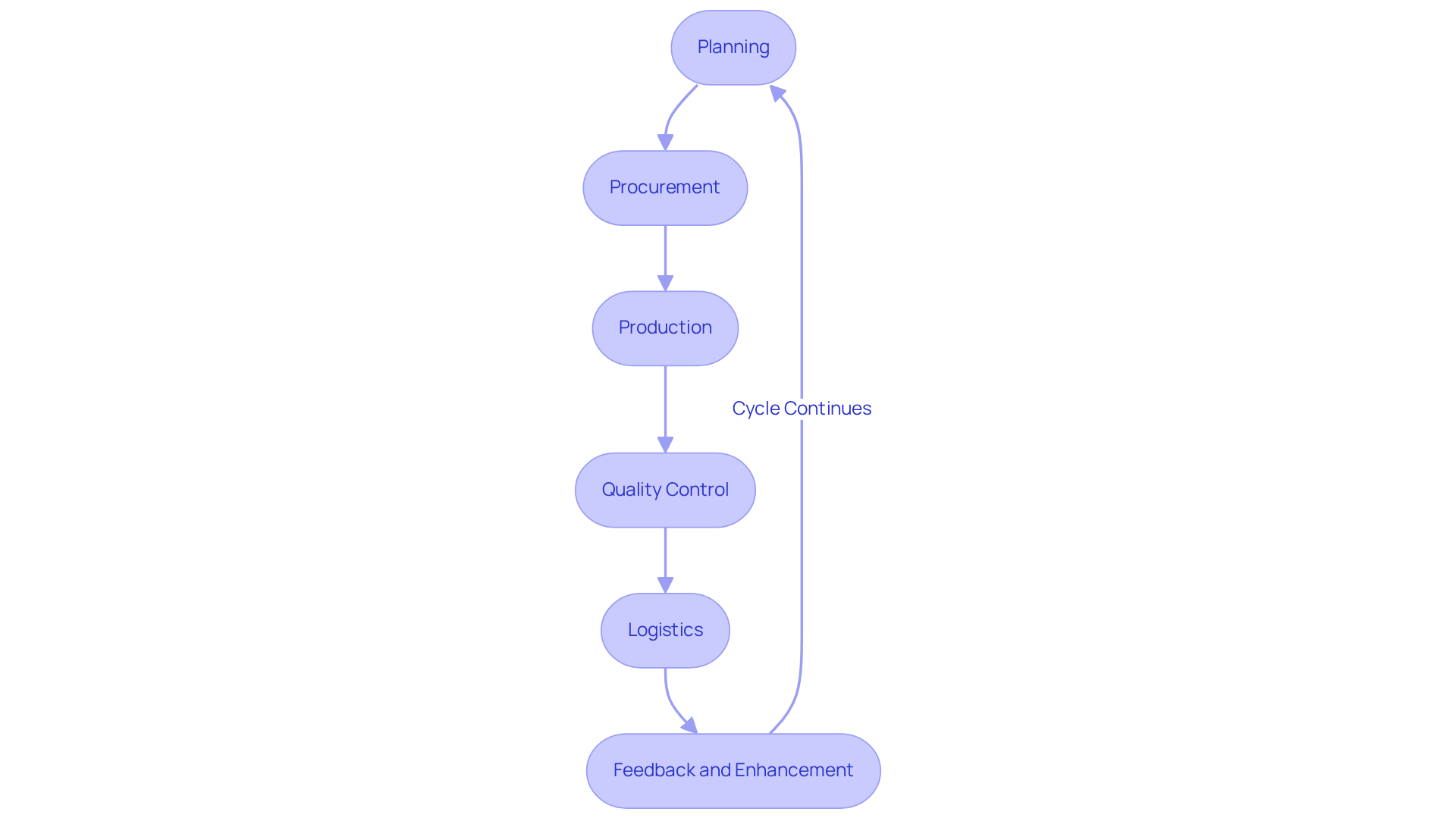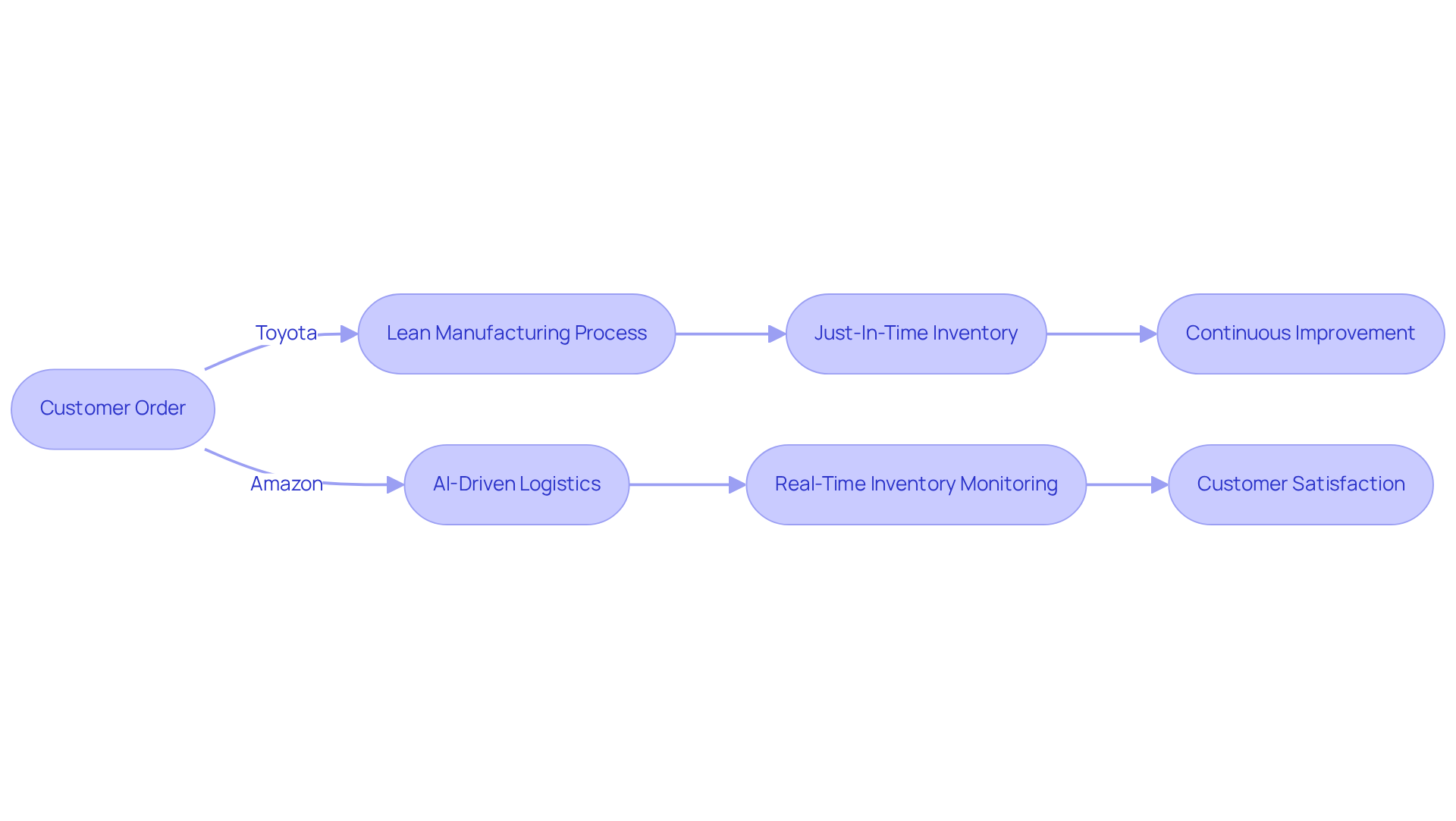
General
|
October 25, 2025
|
Understanding the Operations Process in Business: Key Components and Importance
Overview
You might be wondering about the operations process in business. Well, it’s a crucial sequence of actions that includes:
- Planning
- Procurement
- Production
- Quality control
- Logistics
- Feedback
All aimed at creating products or delivering services effectively. And here's the exciting part: efficient operations really enhance cost management and customer satisfaction.
Take Toyota's lean manufacturing and Amazon's advanced logistics, for example. These real-world scenarios illustrate just how optimized processes can lead to competitive advantages. So, as you think about your own business, consider how improving your operations could make a big difference!
Key Highlights:
- The operations process in business involves a sequence of actions to create products or provide services, encompassing planning, procurement, production, quality control, logistics, and feedback.
- Efficient operations processes enhance cost management, customer satisfaction, and overall business performance, making it crucial for competitiveness.
- Key components of the operations process include planning (setting objectives), procurement (strategic sourcing), production (creating goods/services), quality control (maintaining standards), logistics (managing goods flow), and feedback (continuous improvement).
- Real-world examples like Toyota's lean manufacturing and Amazon's advanced logistics demonstrate the effectiveness of optimised operations processes in achieving competitive advantages.
- Toyota utilises Just-In-Time inventory to minimise waste and enhance productivity, while Amazon leverages technology and data analytics for operational efficiency and improved customer experiences.
Introduction
You might be wondering why understanding the operations process in business is so crucial. Well, for organizations aiming for efficiency and competitiveness, it’s everything! This intricate sequence of actions—from planning to delivery—shapes how resources are used and has a direct effect on cost management and customer satisfaction. But here’s the kicker: with market dynamics constantly shifting, how can businesses not just survive but actually thrive? Let’s dive into that!
Define the Operations Process in Business
You might be wondering what business activities really entail. Well, they’re all about the sequence of actions and tasks that organizations dive into to create products or provide services. This whole process covers everything from the initial planning stages right up to delivering goods to clients. Think about it: it involves various functions like procurement, production, quality control, and logistics.
Understanding the operations process in business is super important for businesses. Why? Because it directly affects efficiency, cost management, and even customer satisfaction! By simplifying the operations process in business, companies can significantly enhance their overall performance and maintain competitiveness in the market. So, how can you apply this to your own situation? Let’s explore some ways to streamline your operations!

Contextualize the Importance of Operations Processes
You might be wondering why the operations process in business is considered such a big deal. Well, they’re crucial for a bunch of reasons! For starters, they help ensure that resources are used efficiently, which can lead to some nice cost savings and even boost profitability. Plus, when the operations process in business is clearly established, you achieve consistency in product quality and service delivery. That’s super important for keeping your customers happy and loyal.
Now, let’s dive into the fast-paced world we live in today. Businesses that can quickly adjust their operations process in business in response to market changes are the ones that tend to thrive. And let’s not forget—efficient procedures also help you stay compliant with industry regulations and standards. This means less risk of legal headaches and a better reputation for your company. Sounds good, right?

Identify Key Components of the Operations Process
You might be wondering how a procedural framework can truly impact the operations process in business success. Well, it’s all about the key elements that ensure everything runs smoothly and effectively. Let’s break it down:
-
Planning: This is where it all starts! You need to set clear objectives and figure out what resources and timelines you’ll need to hit those targets. Good planning lays the groundwork for everything that follows.
-
Procurement: Getting the right materials is crucial for production. These days, it’s all about strategic sourcing and working closely with suppliers. This approach can really boost your operational efficiency and help manage costs.
-
Production: Here’s where the magic happens! This phase is all about creating your goods or services using various methods and technologies. When you streamline production processes, you can ramp up output and cut down on waste.
-
Quality Control: You want to make sure your products meet the standards and expectations of your clients, right? That’s why robust quality control measures are key—they help keep clients happy and loyal, which is vital for long-term success.
-
Logistics: Think of logistics as the backbone of your operation. It’s all about managing the flow of goods from production to delivery, covering warehousing, transportation, and inventory management. Efficient logistics can really minimize delays and cut costs, boosting your overall performance.
-
Feedback and Enhancement: This is where the cycle continues! Regularly evaluating and enhancing your methods based on performance metrics and client feedback is essential. Organizations that foster a feedback culture can adapt quickly to changing market conditions and customer needs.
Each of these elements plays a crucial role in ensuring that the operations process in business runs like a well-oiled machine. When they work together, they help your organization grow and thrive in a competitive landscape.

Examine Real-World Examples of Operations Processes
You might be wondering how some firms manage to showcase such efficient procedures. Take Toyota, for example. They're well-known for their lean manufacturing approach, which does a fantastic job of minimizing waste while maximizing productivity. Their Just-In-Time (JIT) inventory system is a game changer, ensuring that materials arrive exactly when they're needed. This not only cuts down on storage costs but also boosts overall efficiency. Fast forward to 2025, and Toyota's commitment to these lean principles is still driving innovation. They’re constantly adapting their methods to keep up with changing market demands and sustainability goals.
Now, let’s talk about Taiichi Ohno, a key figure in lean manufacturing. He once said, "All we are doing is looking at the timeline from the moment a client gives us an order to the point we collect the cash." His focus on reducing that timeline by eliminating non-value-added wastes is still at the heart of what Toyota does today.
On the flip side, we have Amazon, which has completely revolutionized logistics and supply chain management. Thanks to advanced technology and data analytics, they’ve made operational efficiency a top priority. Their use of AI-driven logistics not only streamlines operations but also enhances customer satisfaction by creating a responsive and personalized shopping experience. You’ve probably noticed their real-time inventory monitoring and sophisticated research models that make swift delivery and outstanding customer service possible. It’s no wonder they’re a leader in the e-commerce space.
As Marc Winkelman points out, "The challenges for manufacturing companies are how to be faster, better, cheaper, compliant and sustainable. We need to deliver supply chain results that beat the competition." These examples really highlight how a well-structured operations process in business can lead to significant competitive advantages and operational excellence. So, what do you think? How can these insights apply to your own experiences?

Conclusion
You might be wondering why understanding the operations process in business is so crucial. Well, for organizations looking to boost efficiency, cut costs, and keep customers happy, it’s absolutely vital! This process covers everything from planning and procurement to production, quality control, logistics, and continuous feedback. By appreciating each piece of the puzzle, businesses can streamline operations and stay ahead in the competitive market.
Let’s dive into some key insights about the operations process:
- Think of effective planning as the bedrock of success.
- Then, there’s strategic procurement and optimized production methods that really amp up operational efficiency.
- Quality control? It’s all about ensuring products meet what customers expect.
- And don’t forget robust logistics management, which helps minimize delays and costs.
Companies like Toyota and Amazon serve as great examples of how nailing the operations process can lead to impressive competitive advantages and operational excellence.
So, here’s the bottom line: a well-structured operations process is incredibly important. As businesses face an ever-changing landscape, being able to adapt and optimize operations is key to sustaining growth and meeting customer demands. By embracing these principles, you not only enhance performance but also set your organization up to thrive in the future. So, how can you apply these insights to boost operational efficiency and effectiveness in your own business adventures?
Frequently Asked Questions
What is the operations process in business?
The operations process in business refers to the sequence of actions and tasks that organizations undertake to create products or provide services, covering everything from initial planning to delivering goods to clients.
What functions are involved in the operations process?
The operations process involves various functions, including procurement, production, quality control, and logistics.
Why is understanding the operations process important for businesses?
Understanding the operations process is important because it directly affects efficiency, cost management, and customer satisfaction, which are crucial for enhancing overall performance and maintaining competitiveness in the market.
How can businesses improve their operations process?
Businesses can improve their operations process by simplifying it, which can significantly enhance their overall performance and competitiveness.
👍
What others are liking
5 Steps to outline your ideal documentation structure
5 MINS READ
Where to start the your journey of mapping out your ideal documentation structure, aligning it with the very heartbeat of your organization?
Defining a winning level of detail in your process
3 MINS READ
What is too much detail, and what is too little? This article described in that winning level detail about what detail is enough.





